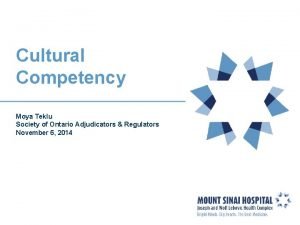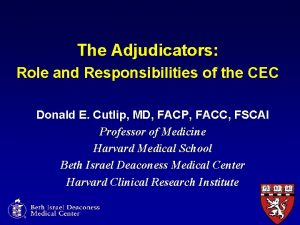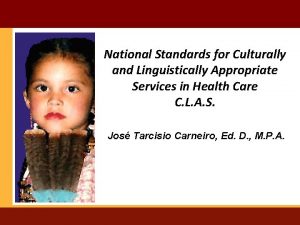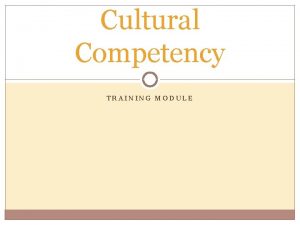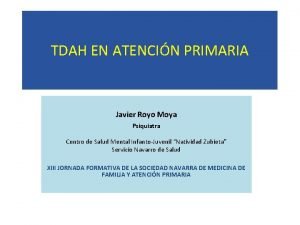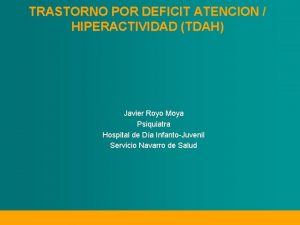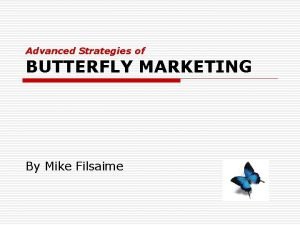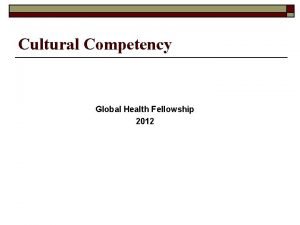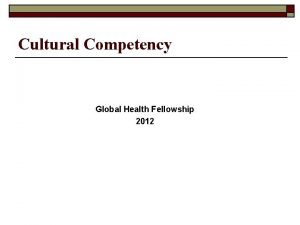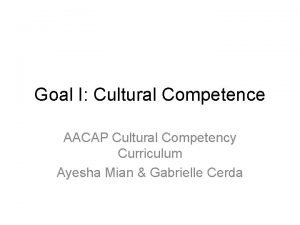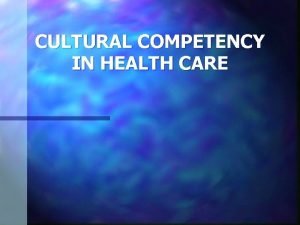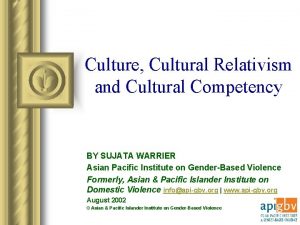Cultural Competency Moya Teklu Society of Ontario Adjudicators









- Slides: 9

Cultural Competency Moya Teklu Society of Ontario Adjudicators & Regulators November 6, 2014

What is the ALLY Campaign? • Empowers employees to combat discrimination by providing knowledge, skills and confidence to: – see past own privilege – develop understanding of experiences of colleagues and patients who face discrimination – recognize overt and covert discrimination – interrupt instances of discrimination

Why launch the ALLY Campaign? • Quality care is equitable care • Workplace harassment and discrimination can lead to adverse health outcomes for employees • Legislative compliance – Human Rights Code – Occupational Health and Safety Act – Excellent Care for All Act

What is an ALLY? ALLY BYSTANDER Thinks about impact of own behaviour Unaware of impact of actions (or inactions) Takes time to listen Does not listen Acknowledges and affirms people’s experiences Denies or minimizes people’s experiences Speaks out against inappropriate behaviour Lets inappropriate behaviour occur without intervention Works to remove systemic barriers Accepts the way things are as “normal” Makes mistakes and learns from them Makes excuses -- Unwilling to learn (and unlearn)

How does one become an ALLY? LEARN about the issues (e. g. barriers, discrimination, marginalization, privilege). PRACTICE how to respond to exercises of privilege, stereotyping, discrimination and harassment. REFLECT on your privilege, assumptions, behaviour, biases, environment.

Step 1 - Learn I know … discrimination when I see/hear ________. homophobia when I see/hear ________. racism when I see/hear ________. transphobia when I see/hear ________. ableism when I see/hear ________.

Step 2 - Reflect Read through each statement and consider whether the statement applies to you. I can kiss my partner goodbye at the airport and be confident that onlookers will either ignore us or smile. I can plan to attend social events and not worry about whether they are wheelchair accessible. I walk alone when it’s dark and do not fear for my safety. I see people of my race represented at all levels of my workplace. When I complete a survey, questionnaire or intake form, my gender is represented by a check box. I can tell my boss and coworkers about my mental health status without fear of losing my job. YES NO

STEP 3 – Practice • Subtly model bias-free language/behaviour • Appeal to common values and principles that guide the organization • Assume good intent • Explain the impact of the comment/conduct • Refer to your own learning/journey • Call on the person’s higher principles • Ask a clarifying question • Use non-verbal signals • Be direct

Measuring Change • Include Me! 2013 Workforce Census • Measuring Health Equity - Patient Demographic Data Collection • E-Learning Survey Results • Anecdotal Evidence
